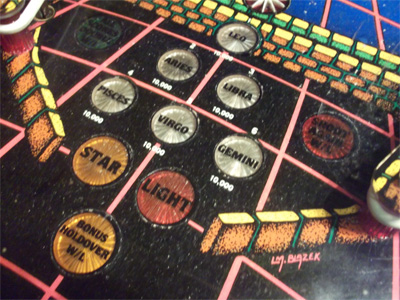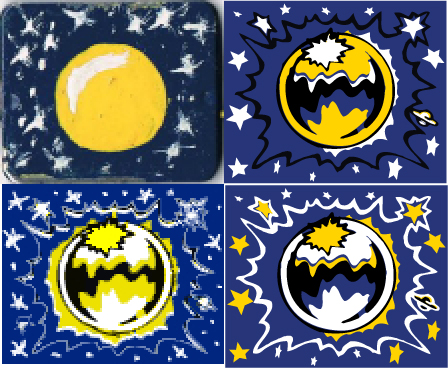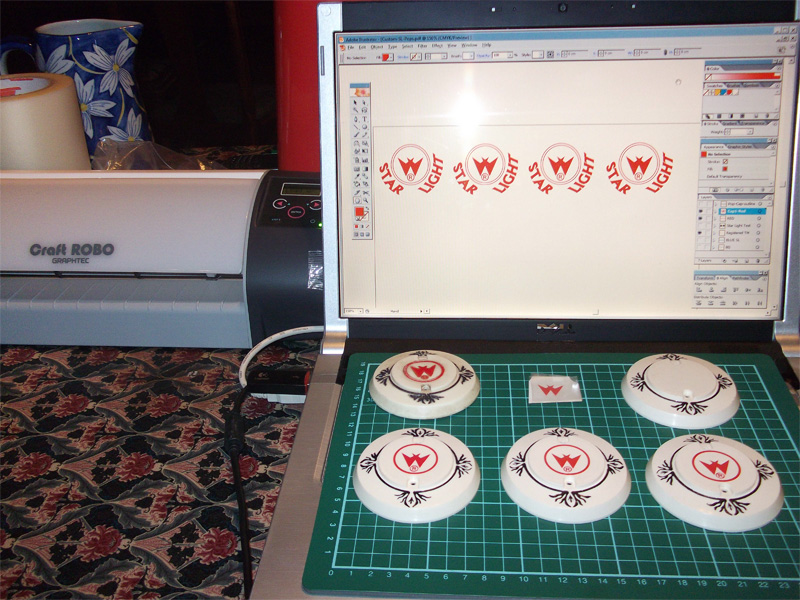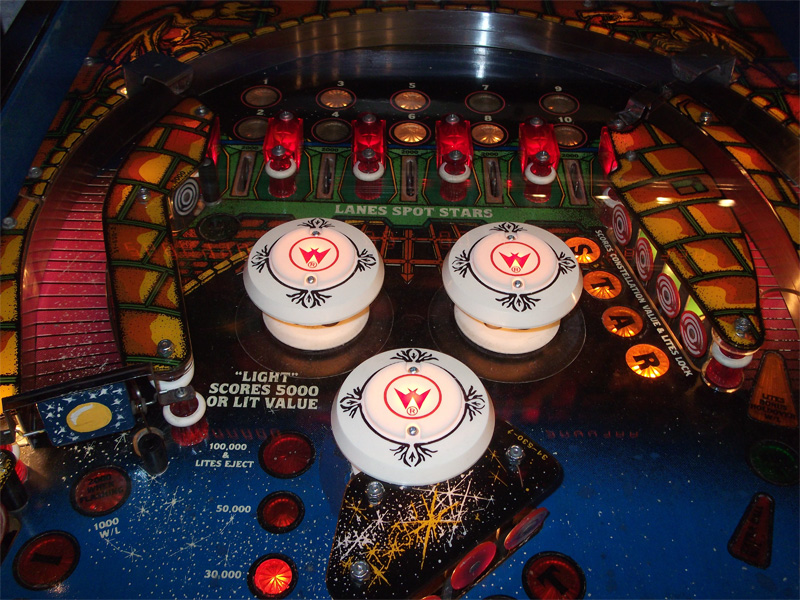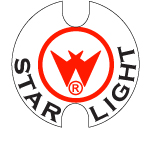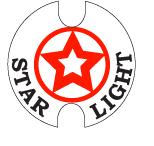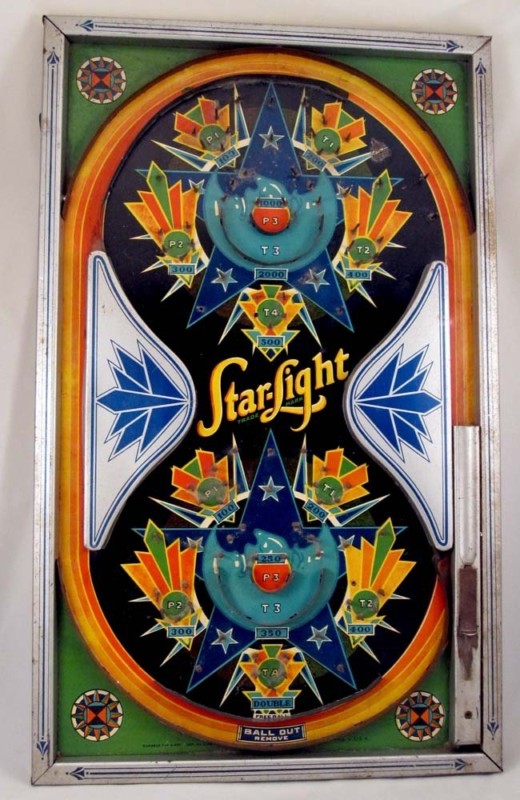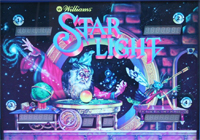 |
Design: Barry Oursler Playfield Art: Larry M. Blazek * Backglass Art by: Tom Schmelzer ** Sound Board/ROM: Eugene Jarvis *** Programming: (researching) Notes: An interview with the game designer Barry Oursler * Playfield and plastics by Larry Blazek, who worked for Advertising Posters Inc. They were a supplier of pinball art to Williams and other game manufacturers in Chicago. Larry worked with Tom Schmelzer at Advertising Posters and was there until Feb '85. Another example of a notable pinball artist who worked there from around '79 would be Doug Watson. ** Tom Schmelzer often has his name misspelled, it is now correct on the ipdb.org Star Light entry, here's a close-up of his signature Tom Schmelzer '84 from my backglass showing the correct spelling. Apologies for the flash in the image. *** Eugene Jarvis did the sound and programming on Firepower. Star Light uses exactly the same sound board and ROM (without speech), so he is credited with sound. Eugene is still in the arcade industry and runs Raw Thrills. |
Game date: June 1984
Model: # 530 my s/n: 530I18049
(I = International, X = Prototype)
![[Back]](img/index.gif)
